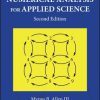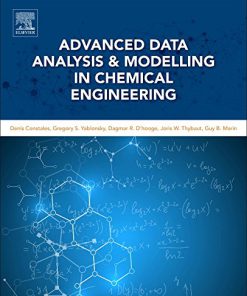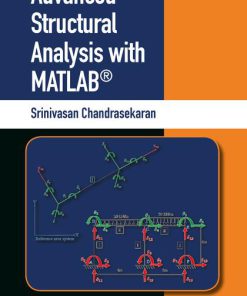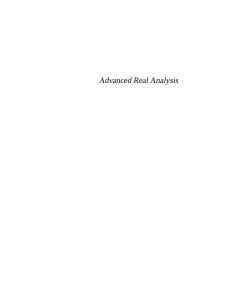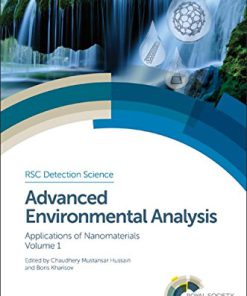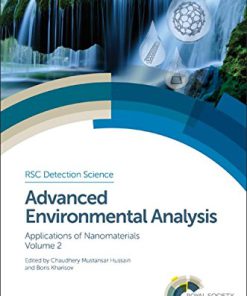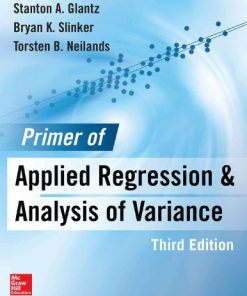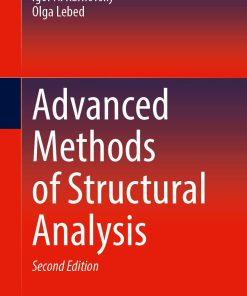Advanced Analysis of Variance 1st by Chihiro Hirotsu 9781119303336 1119303354
$50.00 Original price was: $50.00.$25.00Current price is: $25.00.
Advanced Analysis of Variance 1st by Chihiro Hirotsu – Ebook Instant Download/Delivery ISBN: 9781119303336 , 1119303354

Product details:
Table of contents:
1 Introduction to Design and Analysis of Experiments
1.1 Why Simultaneous Experiments?
1.2 Interaction Effects
1.3 Choice of Factors and Their Levels
1.4 Classification of Factors
1.5 Fixed or Random Effects Model?
1.6 Fisher’s Three Principles of Experiments vs. Noise Factor
1.7 Generalized Interaction
1.8 Immanent Problems in the Analysis of Interaction Effects
1.9 Classification of Factors in the Analysis of Interaction Effects
1.10 Pseudo Interaction Effects (Simpson’s Paradox) in Categorical Data
1.11 Upper Bias by Statistical Optimization
1.12 Stage of Experiments: Exploratory, Explanatory or Confirmatory?
References
2 Basic Estimation Theory
2.1 Best Linear Unbiased Estimator
2.2 General Minimum Variance Unbiased Estimator
2.3 Efficiency of Unbiased Estimator
2.4 Linear Model
2.5 Least Squares Method
2.6 Maximum Likelihood Estimator
2.7 Sufficient Statistics
References
3 Basic Test Theory
3.1 Normal Mean
3.2 Normal Variance
3.3 Confidence Interval
3.4 Test Theory in the Linear Model
3.5 Likelihood Ratio Test and Efficient Score Test
References
4 Multiple Decision Processes and an Accompanying Confidence Region
4.1 Introduction
4.2 Determining the Sign of a Normal Mean – Unification of One‐ and Two‐Sided Tests
4.3 An Improved Confidence Region
Reference
5 Two‐Sample Problem
5.1 Normal Theory
5.2 Non‐parametric Tests
5.3 Unifying Approach to Non‐inferiority, Equivalence and Superiority Tests
References
6 One‐Way Layout, Normal Model
6.1 Analysis of Variance (Overall F‐Test)
6.2 Testing the Equality of Variances
6.3 Linear Score Test (Non‐parametric Test)
6.4 Multiple Comparisons
6.5 Directional Tests
References
7 One‐Way Layout, Binomial Populations
7.1 Introduction
7.2 Multiple Comparisons
7.3 Directional Tests
References
8 Poisson Process
8.1 Max acc. t1 for the Monotone and Step Change‐Point Hypotheses
8.2 Max acc. t2 for the Convex and Slope Change‐Point Hypotheses
References
9 Block Experiments
9.1 Complete Randomized Blocks
9.2 Balanced Incomplete Blocks
9.3 Non‐parametric Method in Block Experiments
References
10 Two‐Way Layout, Normal Model
10.1 Introduction
10.2 Overall ANOVA of Two‐Way Data
10.3 Row‐wise Multiple Comparisons
10.4 Directional Inference
10.5 Easy Method for Unbalanced Data
References
11 Analysis of Two‐Way Categorical Data
11.1 Introduction
11.2 Overall Goodness‐of‐Fit Chi‐Square
11.3 Row‐wise Multiple Comparisons
11.4 Directional Inference in the Case of Natural Ordering Only in Columns
11.5 Analysis of Ordered Rows and Columns
References
12 Mixed and Random Effects Model
12.1 One‐Way Random Effects Model
12.2 Two‐Way Random Effects Model
12.3 Two‐Way Mixed Effects Model
12.4 General Linear Mixed Effects Model
References
13 Profile Analysis of Repeated Measurements
13.1 Comparing Treatments Based on Upward or Downward Profiles
13.2 Profile Analysis of 24‐Hour Measurements of Blood Pressure
14 Analysis of Three‐Way Categorical Data
14.1 Analysis of Three‐Way Response Data
14.2 One‐Way Experiment with Two‐Way Categorical Responses
14.3 Two‐Way Experiment with One‐Way Categorical Responses
References
15 Design and Analysis of Experiments by Orthogonal Arrays
15.1 Experiments by Orthogonal Array
15.2 Ordered Categorical Responses in a Highly Fractional Experiment
15.3 Optimality of an Orthogonal Array
People also search:
advanced variance analysis
advanced variances
four major types of variance analysis
advantages of variance analysis
the analysis of variance compares
You may also like…
Computers - Applications & Software
Advanced Data Analysis & Modelling in Chemical Engineering 1st Edition Denis Constales
Mathematics - Analysis
Advanced Real Analysis 2nd Edition by Anthony W Knapp ISBN 978-0817643829
Science (General)
Primer of Applied Regression & Analysis of Variance Stanton A. Glantz
Physics - Solid State Physics



